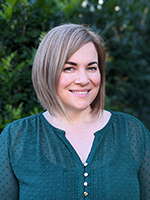How to embed the ELDAC Digital Dashboard into your residential aged care facility
A guest blog post by Amie Butler, ICT Systems, Business Analyst, Carinity
Carinity is a leading not-for-profit, Christian-based care organisation that has been changing lives of people in need – helping individuals and families reach their full potential to live enriched lives. We operate 12 residential aged care facilities throughout Queensland, catering for varying levels of care including permanent residential aged care, dementia specific and respite care.
When the ELDAC project called for expressions of interest to integrate their Digital Dashboard in late 2019, we put our hand up to carry out this integration work in-house. We integrated the ELDAC Digital Dashboard as a mid-layer to our existing clinical data management system using the Power BI software. The dashboard was then rolled out across all of our 11 sites, so clinical staff and managers could easily and effectively access residents’ end of life data and subsequently plan and provide high quality care.
Carinity made the decision to integrate the ELDAC Digital Dashboard in-house as a mid-layer integration. This approach offered us the flexibility of tailoring the dashboard features to suit our service’s unique needs and allowed us to be in full control of the integration process. The integration of the dashboard via a third-party software is easy, provided you have the skills to extract and clean the clinical data and the infrastructure to ensure clinical staff have easy access to the dashboard.
We used the following resources to build the dashboard into our existing system:
- Existing residents’ clinical and care data in an existing electronic data management system.
- Existing platform for management reports and dashboards (Carinity uses Microsoft Power BI).
- IT staff who are proficient in Power BI dashboard development, including skills in extracting, cleaning and analysing existing data within your existing electronic data management system.
- Enthusiasm and a willingness to try the ELDAC Digital Dashboard in your facility.
Now that we have used the dashboard for a significant amount of time, we can confidently say that several benefits of this novel palliative care technology has been realised at our service, including:
- All end of life data including relevant documentation stored in a single location, without having to search through multiple areas of a resident’s profile.
- End of life data available to clinical staff at a glance, including the end of life status, when the last assessment was completed, and any documentation that is missing.
- Ability to create trends reports and calculate metrics across variables such as time, residents, and sites.
- Development of multiple ‘levels’ of the dashboard including for Clinical Nurse Consultants and nursing staff to access while on the floor, as well as high-level reports for regional and head office managers to use.
The experience of the ELDAC Digital Dashboard integration and use at Carinity has been a beneficial one, and we are glad to be using this dashboard continually across our sites. Aged care services that are familiar with in-house development of dashboards using third party software such as Power BI should definitely give the ELDAC Digital Dashboard a try.
Find out more about the ELDAC Digital Dashboard or download the Digital Dashboard kit (PDF, 702kb) to get started.

Amie Butler, ICT Systems, Business Analyst, Carinity